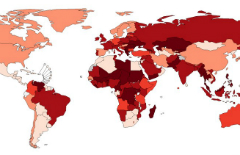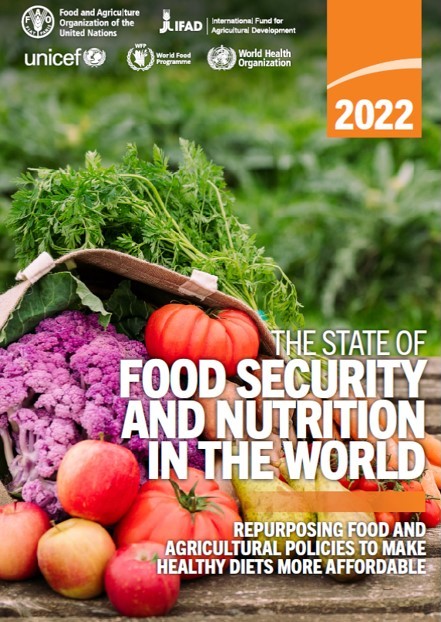New measles surveillance data for 2019
Извор: Светска Здравствена Организација – 18.04.2019

New measles surveillance data is now available on the WHO website. This preliminary data is based on country reports submitted to WHO at the end of every month. Please note these are not official numbers as countries are still reporting cases to WHO. Through WHO and UNICEF’s joint reporting channels, official numbers are made available annually for the previous year in July. Current estimates for total cases and deaths are released in November.
Data from this summary should therefore be reported as provisional and clearly dated (i.e. “provisional data based on monthly data reported to WHO (Geneva) as of April 2019”).
15 APRIL 2019, GENEVA – Measles cases have continued to climb into 2019. Preliminary global data shows that reported cases rose by 300 percent in the first three months of 2019, compared to the same period in 2018. This follows consecutive increases over the past two years.
While this data is provisional and not yet complete, it indicates a clear trend. Many countries are in the midst of sizeable measles outbreaks, with all regions of the world experiencing sustained rises in cases. Current outbreaks include the Democratic Republic of the Congo, Ethiopia, Georgia, Kazakhstan, Kyrgyzstan, Madagascar, Myanmar, Philippines, Sudan, Thailand and Ukraine, causing many deaths – mostly among young children.
Over recent months, spikes in case numbers have also occurred in countries with high overall vaccination coverage, including the United States of America as well as Israel, Thailand, and Tunisia, as the disease has spread fast among clusters of unvaccinated people.
Measles is one of the world’s most contagious diseases, with the potential to be extremely severe. In 2017, the most recent year for which estimates are available, it caused close to 110 000 deaths. Even in high-income countries, complications result in hospitalization in up to a quarter of cases, and can lead to lifelong disability, from brain damage and blindness to hearing loss.
The disease is almost entirely preventable through two doses of a safe and effective vaccine. For several years, however, global coverage with the first dose of measles vaccine has stalled at 85 percent. This is still short of the 95 percent needed to prevent outbreaks, and leaves many people, in many communities, at risk. Second dose coverage, while increasing, stands at 67 percent.
With governments and partners such as the Measles & Rubella Initiative, Gavi, the Vaccine Alliance, UNICEF and others, response operations are underway to bring country outbreaks under control, strengthen health services, and increase vaccine coverage.
- After conducting emergency vaccination campaigns targeting 7 million children from 6 months through 9 years of age, Madagascar is now seeing overall declines in measles cases and deaths.
- In the Philippines, over 3 890 000 doses of the measles and rubella vaccine have been given to children aged under 5 years.
- In the Democratic Republic of the Congo, the country is preparing to launch a combined response with polio vaccine.
- In collaboration with local health authorities, WHO and UNICEF conducted a nationwide measles and rubella vaccination campaign in Yemen reaching more than 11.6 million (90%) children aged 6 months–16 years across the country.
Responding to measles requires a range of approaches to ensure all children get their vaccines on time, with particular attention to access, quality and affordability of primary care services. It will also take effective public-facing communication and engagement on the critical importance of vaccination, and the dangers of the diseases they prevent.
WHO also recommends tailored approaches that ensure immunization services meet the needs of everyone – making sure that clinics are accessible to all areas, at the right times and to all population groups – especially those who face systemic discrimination and disadvantage.
Coverage of the 2nd vaccine dose also needs to increase globally, to maximize a population’s protection against the disease. Today, 25 countries still need to make the 2nd dose part of their essential immunization programme.
Notes
The official number of cases of measles reported by WHO member states is only available by July the following year. While providing a strong indication of overall trends, monthly surveillance data is provisional and incomplete, as many countries – particularly those experiencing major outbreaks – are still reporting data. Due to delays in reporting, there may also therefore be discrepancies between what is presented in these reports and what is reported directly from countries.
The actual numbers of cases – captured in global estimates – will also be considerably higher than those reported. WHO estimates that less than 1 in 10 cases are reported globally, with variations by region. With this proviso, to date, 2019 has seen 170 countries report 112,163 measles cases to WHO. As of this time last year, there were 28,124 measles cases from 163 countries. Globally this is almost a 300% increase. The WHO African region has recorded a 700% increase, the Region of the Americas 60%, the European region 300%, the Eastern Mediterranean 100%, with 40% increases in Southeast Asia and the Western Pacific. Global estimates (for total cases and deaths) are generated once WHO has received and reviewed all country data for the previous year. For official data from 1980-2017, please visit our website.
Contacts
Fadéla Chaib
Telephone: +41 22 791 3228
Mobile: +41 79 475 5556
E-mail: chaibf@who.int
Hayatee Hasan
Telephone: +41 22 791 2103
Mobile: +41 79 500 6532
Email: hasanh@who.int



